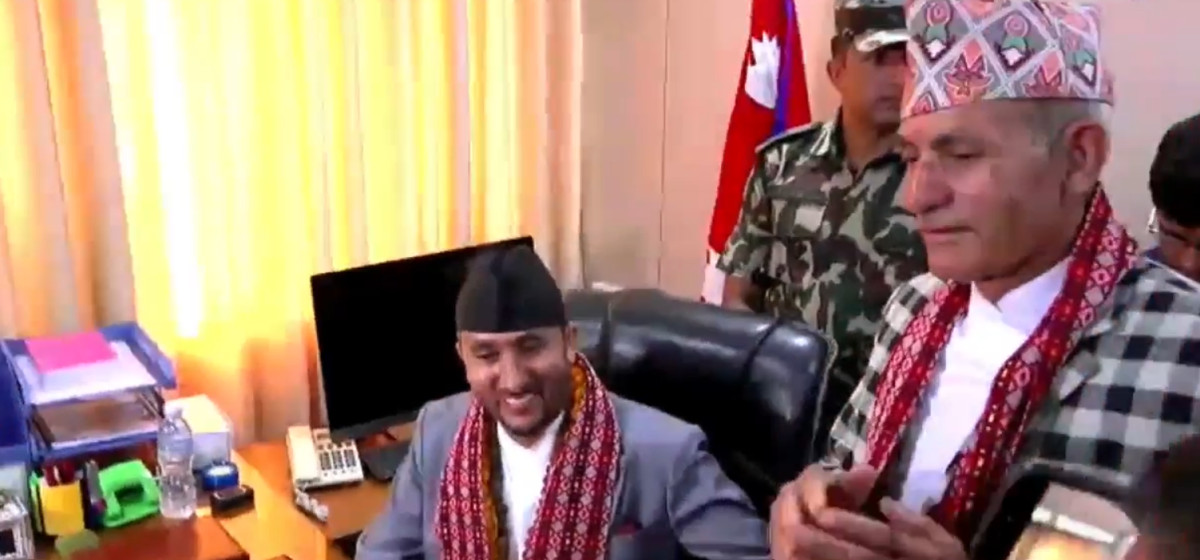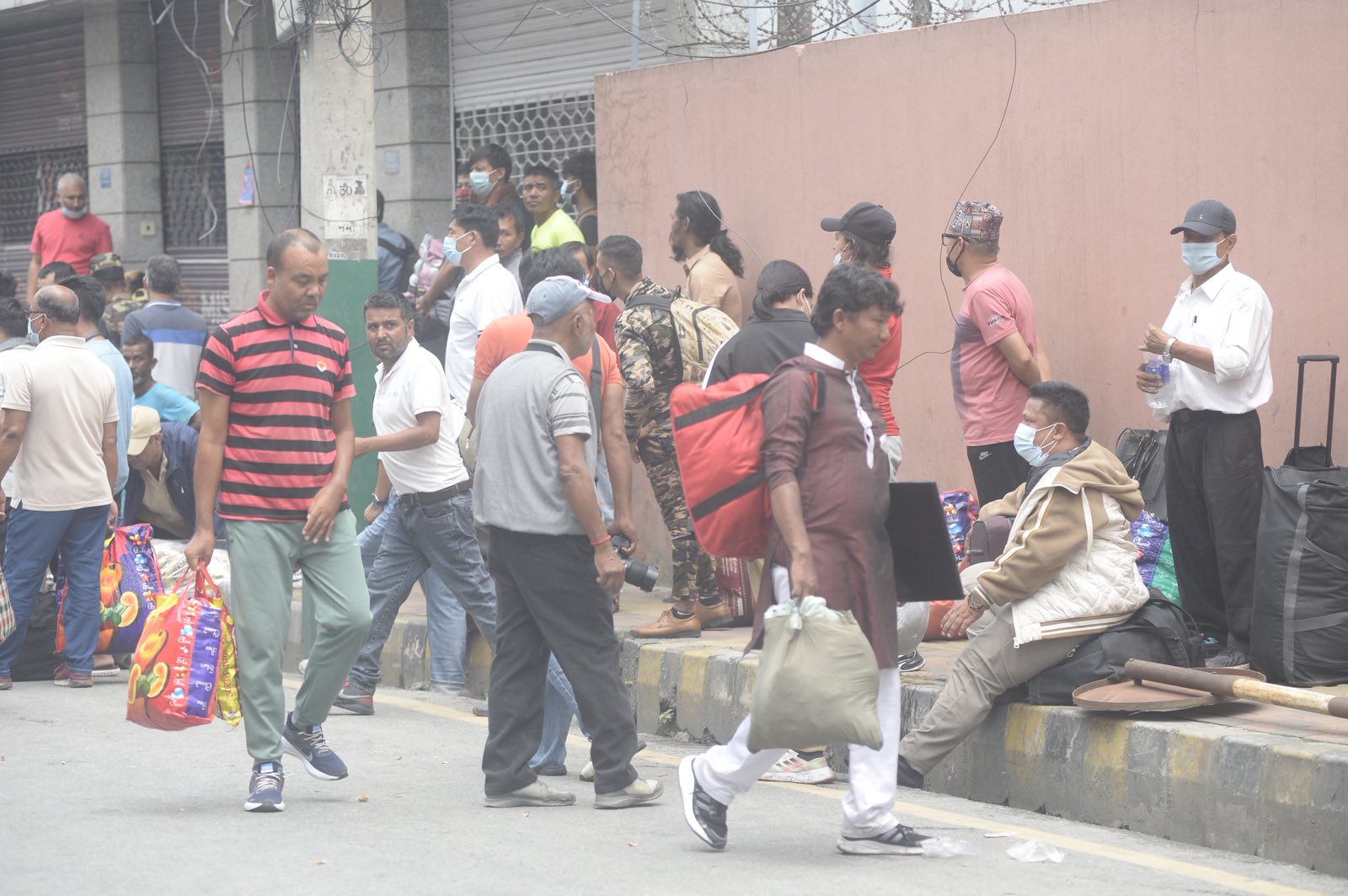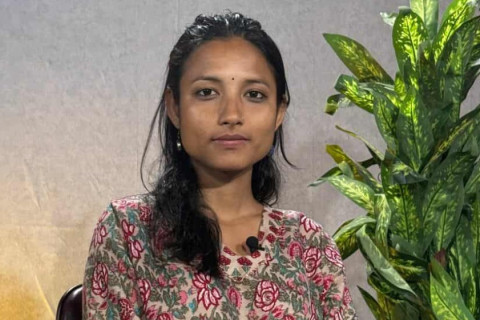The political landscape of Nepal is abuzz following former President Bidya Devi Bhandari’s formal return to active politics of the Communist Party of Nepal Unified Marxist and Leninist (CPN-UML). Announcing during the 74th birth anniversary of Madan Bhandari and the 25th anniversary of the Madan Bhandari Foundation (MBF) in Kathmandu on Saturday, she declared, “I have now rejoined the UML family as a member, and I am proud of it. I have no special ambition.”
Despite her modest disclaimer, Bhandari’s increasing political engagements and recent meetings with party chairman KP Sharma Oli strongly indicate that her return is strategic. Signs suggest she is poised to contest the party's leadership in the near future. Her decision to reenter politics was set in motion more than two years ago when she chose to forgo the privileges entitled to a former president.
Bhandari’s comeback is largely attributed to the leadership style of Oli. He has been widely criticized for undermining internal democracy within the UML, fostering factional divides, marginalizing dissenting voices, disregarding party policies, and treating constitutional provisions with undue flexibility.
His leadership has also been marred by accusations of condoning corruption, straining relations with neighboring countries, offering false promises, distancing the party from other leftist forces, and misusing state mechanisms for personal interests. Many believe Oli compromised key democratic values and tarnished the party’s image in his quest to retain power.
Frustrated with such leadership, many senior leaders, committed cadres, and disappointed voters yearned for an alternative figure to realign the party with its core ideals. In their eyes, Bidhya Bhandari emerged as that alternative—a leader believed to possess the courage and ability to guide the party back onto a principled path.
A former deputy chair of the UML, Bhandari’s rise to Nepal’s highest constitutional post was enabled by Oli’s political calculus. Once allies, their relations soured as Bhandari amplified her political activities through the MBF. The foundation, established in memory of her late husband and former party General Secretary Madan Bhandari, has since emerged as her independent political platform.
Madan Bhandari’s tragic death in a ‘mysterious’ road accident on May 16, 1993, marked a turning point in Bidhya’s life, catapulting her into active politics. Her rapid ascent culminated in her becoming Nepal’s first female president in 2015, a position she retained through re-election in 2018.
Bhandari’s reentry is likely to trigger the Pygmalion Effect—where heightened expectations could catalyze her emergence as a transformative figure.
Impact on the UML
Bhandari’s return is poised to reshape the internal dynamics of the UML. The party, already plagued by factionalism, now faces a potent challenge to Oli’s dominance. Her reentry has revitalized dissenting voices within the UML.
Her presence is likely to embolden cadres and senior leaders who have long harbored dissatisfaction but lacked the courage or leverage to confront Oli. With Bhandari as a rallying figure, these sidelined leaders may coalesce into a formidable faction capable of contesting party leadership. Bhandari’s ability to draw public attention and grassroots support could erode Oli’s influence, rekindling debates about internal democracy, leadership succession, and ideological rejuvenation.
The UML hosts multiple ideological camps, but the intensity of its internal conflict has largely been fueled by Oli’s exclusionary tactics. This environment gave birth to the party’s significant split, leading Madhav Kumar Nepal to form the CPN Unified Socialist Party (USP).
Many who stayed within the UML did so to challenge Oli’s leadership. These dynamics facilitated Bhandari’s return, as many party members saw her as the much-needed counterweight to Oli’s authoritarian style.
Oli’s strategy to nominate Bhandari as president—perhaps hoping to retire her from active politics—has now backfired. His refusal to entertain her comeback was shattered when senior UML leaders encouraged Bhandari to vie for the party chair.
Prakash Man Singh signals intent to run for NC Presidency again

His public statement that “no one should aspire to replace him for the next 20 to 25 years” and his attempt to mobilize party cadres against Bhandari reflect his growing insecurity. Even General Secretary Shankar Pokharel unsuccessfully proposed barring Bhandari from internal party politics—a move immediately rejected by the Central Secretariat.
The visible rift between Oli and Bhandari was evident during Saturday’s event, where both shared the dais but avoided eye contact or conversation. Even Ishwor Pokharel, a known confidant of Bhandari, refrained from exchanging pleasantries with Oli. Oli also spoke ill of Madan Bhandari which is construed as an expression of animosity toward Bidhya.
Bhandari’s rise could rejuvenate the UML, potentially shifting it toward a more democratic and inclusive internal culture—or it could intensify factionalism if Oli continues to resist. The party may face a prolonged leadership crisis or, if managed well, Bhandari’s rise could serve as a catalyst for the UML’s institutional reform.
Impact on Other Left Parties
Bhandari’s comeback could recalibrate power among Nepal’s leftist parties. Dissatisfied cadres from smaller factions like the USP and sections of the CPN Maoist Centre (MC) may gravitate toward her leadership, viewing her as a unifying force against Oli’s centralization of power.
Pushpa Kamal Dahal and Madhav Kumar Nepal, chairmen of the MC and USP respectively, are at loggerheads with Oli. The hostility between Oli and Nepal escalated when the Commission for the Investigation of Abuse of Authority filed a corruption case against Nepal, widely believed to be instigated by Oli.
Nepal now seeks a secure political landing. The case and Oli’s efforts to poach his leaders have left Nepal politically vulnerable. Against this backdrop, he is likely to accept Bhandari’s leadership without hesitation, possibly seeking a respectable position under her influence.
Dahal, whose political popularity has been steadily eroding, also seeks refuge. Bhandari emerges as an acceptable leader for him. It is said Dahal facilitated Bhandari’s return by orchestrating the comeback of former Vice President of Nepal Nanda Bahadur Pun as MC deputy chair, softening criticism regarding Bhandari’s reentry.
Bhandari’s comeback is likely to attract left-oriented fringe parties. These fragmented parties may explore alliances or potential mergers with the UML ahead of the next general elections in 2028. Her leadership could encourage renewed conversations about a broad-based left alliance in preparation for future elections.
Impact on the Nepali Congress Party
The Nepali Congress (NC), the dominant player in the ruling coalition, may face both opportunities and challenges. The UML’s internal conflict may offer the NC a short-term advantage. However, if Bhandari consolidates anti-Oli forces and revives the UML’s image, the NC will face a reinvigorated challenger.
Bhandari’s focus on women’s leadership, inclusion, and democratization could attract swing voters disenchanted with both the UML and the NC. Her potential alliances with other leftist parties may force the NC to recalibrate power-sharing strategies and leadership succession plans.
Impact on Overall Nepalese Politics
Bhandari’s return introduces significant changes to Nepal’s political trajectory. Her presence could inspire increased women’s political participation. Yet, her comeback may either intensify political polarization or lead to a realignment that breaks the current cycle of patronage and personalistic leadership.
A fresh leadership contest within the UML could reinvigorate public interest, especially among younger voters. Bhandari’s reentry may accelerate the demand for leadership renewal across parties.Her political revival will likely have ripple effects across Nepal’s power structures, affecting election strategies, coalition formations, and the nature of political debates.
Impact on Governance
The contest between Oli and Bhandari is likely to create short-term uncertainty for Nepal’s governance. If the leadership battle escalates, it may stall the UML’s decision-making capacity, weakening its legislative performance.
Conversely, Bhandari’s leadership could revitalize the UML’s governance agenda, focusing on inclusivity, anti-corruption, and service delivery reforms. Her potential to realign factions may destabilize existing coalitions at federal and provincial levels.The ultimate impact on governance will hinge on whether Bhandari’s rise fosters constructive competition or leads to prolonged dysfunction.
Impact on International Relations
Bhandari’s return could subtly shift Nepal’s foreign policy posture. Nepal has faced diplomatic isolation, particularly from India, due to Oli’s assertive nationalism. Bhandari’s leadership could steer the UML toward more balanced regional engagement.
As a former head of state, Bhandari brings international recognition that could help restore Nepal’s image as a stable diplomatic partner. Her leadership style is likely to be more predictable and consultative, appealing to development partners and multilateral agencies. Her close aides advocate for maintaining equidistance between India and China.
Bhandari supports regional cooperation initiatives. Her influence may bolster Nepal’s participation in regional fora like BIMSTEC and SAARC, focusing on connectivity, trade, and sustainable development. Under her leadership, Nepal may experience improved engagement with Western countries and development partners critical of democratic backsliding under previous leadership.
In sum, Bhandari’s reentry could help Nepal recalibrate its diplomatic ties, fostering a more stable and pragmatic foreign policy environment.
Challenges
Bhandari’s return is fraught with many challenges. Restoring internal democracy within the UML and addressing grievances of marginalized leaders are key. Oli’s loyalists will likely resist her, potentially leading to prolonged factional conflict.
The UML has suffered internal splits before. Bhandari’s return may deepen divisions if it triggers leadership contests or challenges to Oli’s authority. Without careful navigation, her comeback could spark another split, push the party into chaotic infighting, and distract it from electoral preparations.
Critics may argue that her return is self-serving rather than a genuine effort to rejuvenate the party. Oli’s camp and external opponents may label her a political opportunist misusing her presidential image. Patriarchal attitudes may also subtly resist her leadership.
Some factions may see her as Oli’s creation, while others may suspect external alignments. Without trust-building, she may be seen as representing only a specific faction.
As a former president, Bhandari will attract public scrutiny. People will expect statesmanship, not just party politicking. Ethical questions may arise about whether it is appropriate for a former president to rejoin party politics so directly.
Way Forward
Bhandari must carefully balance ambition, alliances, and public aspirations. Instead of immediately challenging Oli, she should build alliances with sidelined leaders, youth wings, and grassroots cadres, focusing on widening her influence gradually.
Her public narrative should emphasize unity, democratic revival, and inclusion of marginalized groups and younger leaders. She should advocate for national interests like women’s empowerment, political integrity, and democratic reforms, avoiding petty factional battles.
She should quietly build ties with USP, MC, and dissatisfied Tarai-based parties, exploring a left-leaning electoral alliance that could challenge both Oli’s UML and the NC. Organizing public programs through the MBF and focusing on marginalized groups and local leaders will build public support.
She must champion intra-party democracy and leadership renewal by pushing for transparent leadership selection processes. Managing the chairpersonship ambition narrative carefully is key; it should appear as a byproduct of party consensus rather than personal ambition.
Conclusion
Bidhya Devi Bhandari’s political comeback is more than a personal journey—it is a watershed in Nepal’s evolving political narrative. Her return has disrupted KP Oli’s dominance and the ripple effects are poised to extend across leftist factions, the NC, and Nepal’s governance structures.
Whether Bhandari’s reentry will usher in leftist unity or deepen polarization remains to be seen. What is certain is that her presence will compel every key player to recalculate their strategies. As the political chessboard resets, Bhandari stands as both a challenger and a symbol—a reminder that leadership vacuums can be filled in the most unexpected ways.

































